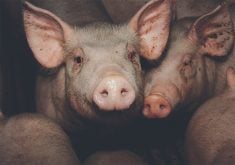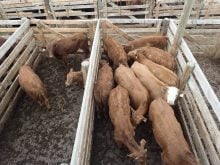The Canadian Food Inspection Agency has approved an alternative for destroying infectious prions responsible for transmitting BSE.
Specified risk materials such as cattle brains and spinal cords are now rendered and sent to a designated landfill in central Alberta. They are banned from commercial use such as animal feed and fertilizer.
“The beef industry is under enormous stress and the problem is how to get some value out of these materials that have to be disposed of or destroyed,” said Erick Schmidt, president of Biosphere Technologies Inc, an Alberta company that developed a thermal hydrolysis process to destroy prions.
Read Also

More factors affecting winter weather
When you combine a weak La Niña, early Siberian snow, and a warm northern Pacific, it’s easy to see why long-range winter forecasting is so complex.
Prions are difficult to destroy. They can be rendered inactive at temperatures greater than 850 C or boiled in sodium hydroxide.
Thermal hydrolysis uses high temperature saturated steam and pressure to denature the infectious proteins and other microorganic disease agents. The two-hour process refines the raw materials into fatty acids, amino acids and minerals.
“Thermal hydrolysis is using the water molecule as the active chemical agent,” Schmidt said.
It does not reduce the volume.
The end product looks and smells like molasses and can be dehydrated and turned into pellets, which can be used as fertilizer.
The process can also separate bioproducts such as fatty acids and amino acids, which can have other industrial uses.
The next step is to build a $35 million commercial facility at Lacombe, Alta., within two years.
The refinery will also hydrolyze organic wet waste from commercial and household sources, providing additional feedstock for anaerobic digestion and the production of biogas, co-generated power and thermal energy.
A section of the plant will be used for research projects with Agriculture Canada, the Alberta Research Council, Olds College and the Brooks Crop Diversification Centre. Researchers at Brooks are experimenting with the material as a fertilizer in hydroponic greenhouses.
The process has been researched for nearly 10 years and underwent tests at the Roslin Institute in Edinburgh, Scotland. Researchers had to develop the equipment and then put infected brain material through the process to ensure infective prions were destroyed.
Biosphere Technologies has patents issued in 18 countries.
The process is approved for use in the European Community.















